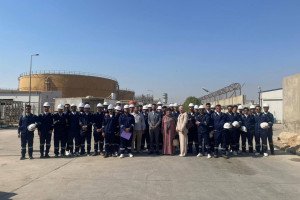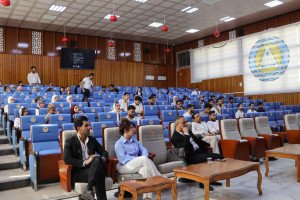
I discussed a PhD thesis at the College of Engineering at the University of Basrah (Structural behavior of reinforced concrete slabs poured using self-compacting concrete one on the concrete returned as coarse aggregate)
The thesis presented by the student Malik Karim Abkhaish dealt with two parts, an experimental part, which includes the test of one-way plates and two-way plates, each type of which is divided into plates that fail to cut and others that fail to bend
In the second part of the study, the panels were represented and analyzed using the nonlinear three-dimensional finite element method, using the ANSYS19 program.
The practical program for one-way slabs consists of sixteen models divided into five groups. Various parameters that affect the behavior of one-way slabs have been studied. These transactions include the type of failure, the proportions of replacing natural coarse aggregate with recycled coarse aggregate at 0%, 25%, 50%, 75%, the amount of reinforcing steel, the thickness and the location of the load along the slab for the two-way slabs, the practical section of the research studies the effects of embedding the recycled concrete on the behavior of those slabs under the influence of punching and flexural shear loads
It consists of fourteen square panels
The thesis aims to study the structural behavior of reinforced and poured concrete slabs using self-compacting concrete containing reconstituted concrete as coarse aggregate with different replacement rates.
The thesis concluded for the plates that failed by punching shear that the crack-resistant load decreases by percentages ranging from 12% to 22%, and the penetration-resistant load decreases by rates ranging from 2% to 11%. As for the panels that failed to bend, the percentages of decrease in the crack-resistant load decrease by rates ranging from 10 % to 24% and the flexural resistance load decreases by rates ranging from 5% to 20%. The practical results of the slab examination for both types of failure also showed that the loading-precipitation curves for slabs that do not contain and that contain hostile aggregate are identical with an increase in precipitation in favor of slabs containing concrete aggregates. Appointment.







